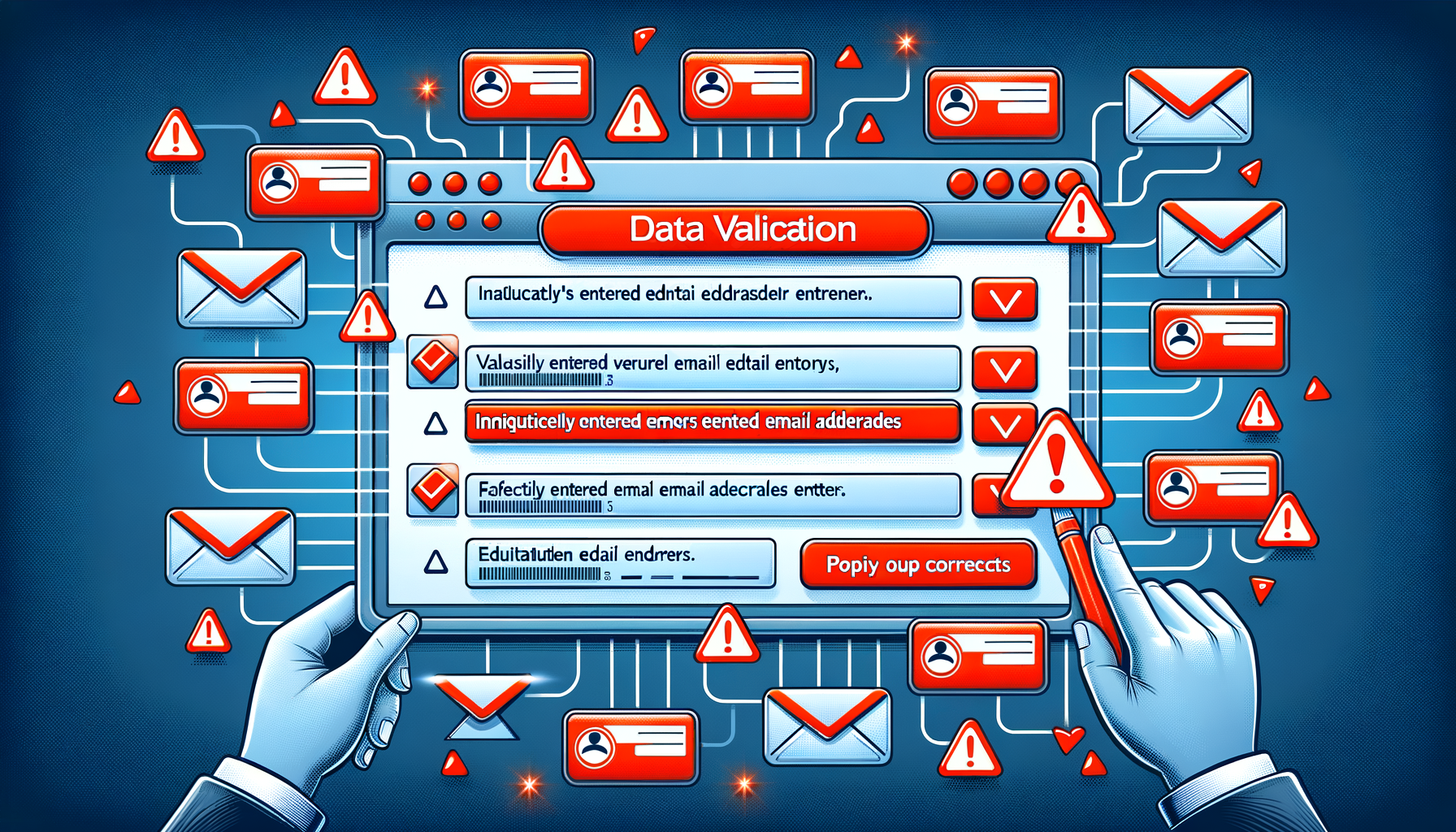Data Validation: Your First Defense Against Data Mistakes

Have you ever wondered how a company ensures that the reports and analytics they rely on are accurate? It all starts with data validation. Data validation is the crucial process of verifying that data is accurate, consistent, and meets the necessary standards before it is used for decision-making or analysis.
Imagine entering a room where data flies off the charts with no system to stop inaccuracies. Seems chaotic, right? Data validation acts as a gatekeeper. By checking data for accuracy and correctness before use, this process prevents small mistakes from turning into big problems.
Key Vocabulary: Understanding Data Validation
- Data Validation: The process of ensuring that a program operates on clean, correct, and useful data. It involves checking the accuracy and quality of source data before using, importing, or otherwise processing data.
- Example: When entering data into a customer relationship management (CRM) system, inputs like emails, phone numbers, or dates are checked for validity, preventing erroneous or incomplete data entries.
Why Data Validation Matters
Let’s delve into why data validation should be your number one priority:
- Prevents Errors from Spreading: Mistakes caught early during data entry save a company from dealing with erroneous data that could influence business decisions.
- Boosts Trust in Reports: Consistent validation assures stakeholders that data-backed decisions are based on reliable information.
- Saves Time on Cleanup: Correcting errors in data later in the process can be cumbersome. Validation solves problems upfront, freeing up resources for other more critical tasks.
When and Where to Use Data Validation
1. Business Dashboards
For businesses that rely on dashboards for quick insights, validating the data that populates these tools is essential. Correct and complete data ensures accurate reflection in graphs and reports, which aids decision-making processes.
2. Data Cleaning
Data validation is indispensable in data cleaning, where the goal is to identify and correct errors or inconsistencies in data sets. This process is foundational in making datasets analytics-ready, thereby increasing reliability in subsequent analyses.
3. Automation Pipelines
In automated data pipelines, validation ensures each step’s input and output data adhere to expected formats and ranges. This is crucial for maintaining the integrity of entire project workflows, reducing the need for repetitive manual checks.
4. Decision-Making and Analytics
Decision-making processes within businesses are heavily reliant on the accuracy of data analytics. When data is validated effectively, the resulting insights become a trustable resource for executives and managers.
Related Concepts
- Data Quality: The measure of data’s condition based on factors like accuracy, completeness, consistency, reliability, and whether it’s up-to-date.
- Data Cleaning: The process of correcting or removing incorrect, corrupted, incorrectly formatted, duplicate, or incomplete data within a dataset.
- Data Verification: The practice of confirming that the data is exactly what it is supposed to be, often intertwining with validation to ensure data quality.
Final Scenario: Applying Data Validation in CRM
Consider a scenario where a sales team uses CRM software to track customer interactions and leads. Every new customer lead input into the system is subjected to data validation checks. Incorrectly formatted phone numbers, invalid email addresses, or any inconsistent data part gets flagged immediately. This attention to detail ensures that both marketing and sales teams can rely on the CRM data to strategize and convert leads effectively.

Conclusion: Make Data Validation Your First Line of Defense
In the world of data, a small mistake can snowball into a significant issue. Data validation acts as your first line of defense against such errors. By ensuring the accuracy and correctness of data right from the start, your analytics, reports, and business decisions become more reliable and effective.
Suggestions to Apply This: Look into your current data entry processes at work. Identify if there are validation steps at play or if there’s room to strengthen them. This can lead to significant improvements in data quality and trust in your data-driven decisions.
Keep exploring more about data management practices, and arm yourself with the knowledge that can make a substantial impact in your field!
